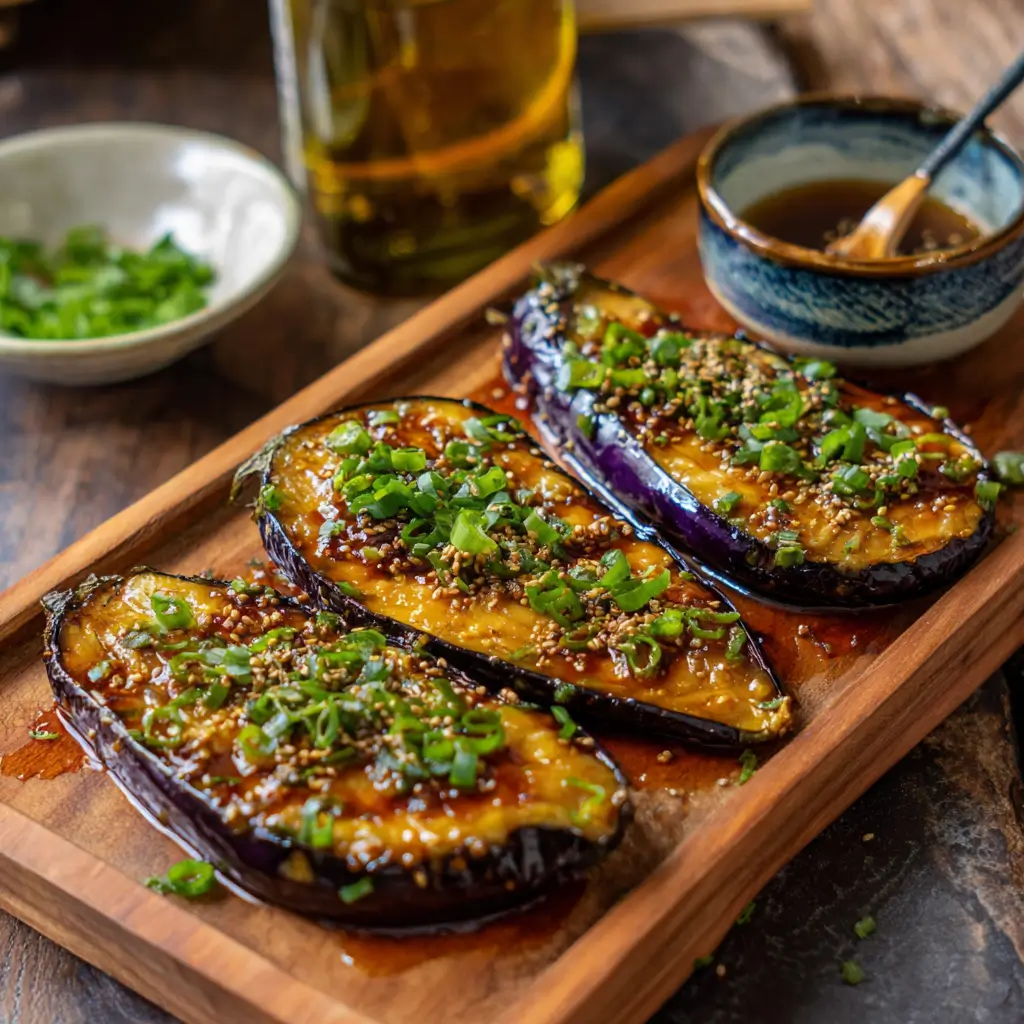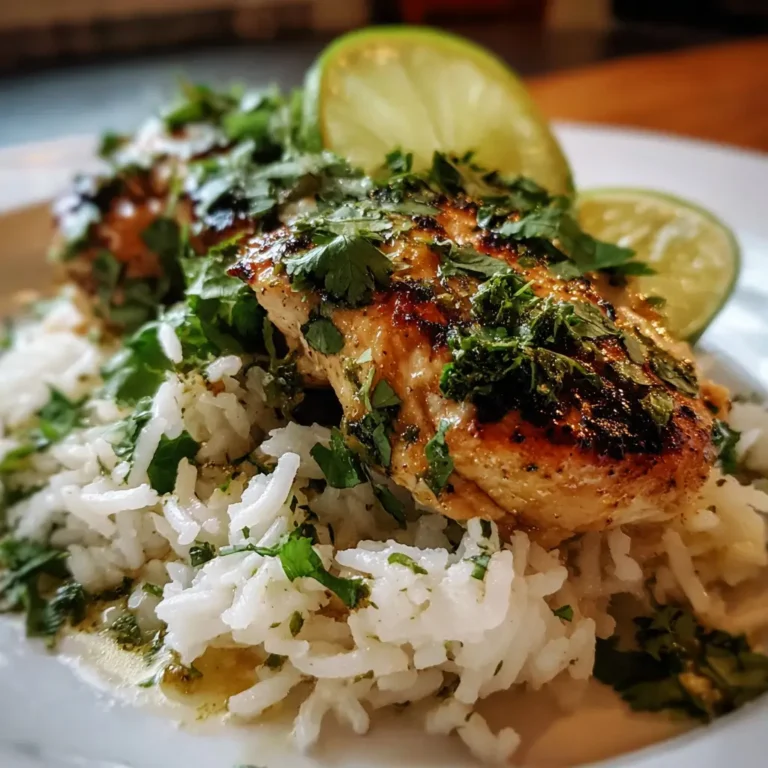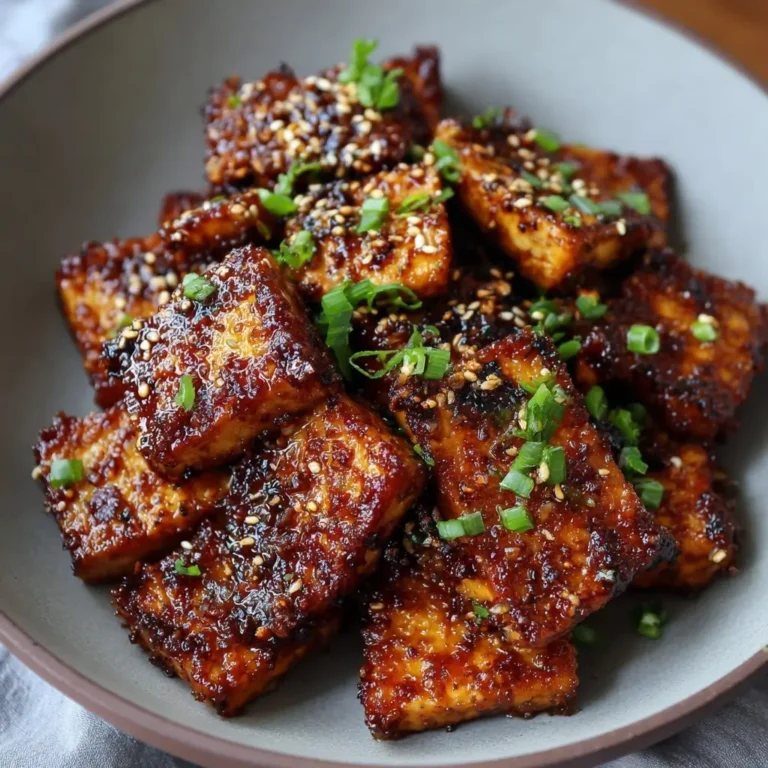Miso‑Glazed Eggplant (Nasu Dengaku)
Miso‑Glazed Eggplant (Nasu Dengaku): A Deep Dive into a Japanese Culinary Treasure
Introduction
Miso-glazed eggplant, known in Japan as Nasu Dengaku, is a beloved traditional dish that exemplifies the elegance and depth of Japanese home cooking. With its rich umami flavor, velvety texture, and beautifully caramelized glaze, this dish strikes a perfect balance between simplicity and sophistication. Often served as part of a kaiseki (traditional multi-course meal) or as a comforting side dish in everyday dining, Nasu Dengaku showcases how humble ingredients—eggplant and miso—can be transformed into something extraordinary through careful preparation and attention to detail.
The dish has become increasingly popular outside Japan due to the global rise of plant-based diets and interest in umami-rich, fermented foods. Its soft, melt-in-the-mouth eggplant paired with a savory-sweet miso glaze makes it an excellent option for vegetarians and meat-eaters alike. Whether you’re exploring Japanese cuisine for the first time or seeking to deepen your culinary repertoire, Nasu Dengaku offers both accessibility and authenticity, making it a must-try recipe for any home cook.
The History
The origins of Nasu Dengaku trace back to medieval Japan, during the Muromachi period (1336–1573), when tofu and miso were gaining prominence in Japanese Buddhist temple cuisine (shojin ryori). The term “dengaku” originally referred to a form of rustic folk entertainment involving dancing and singing, but in culinary context, it evolved to describe grilled or broiled foods coated with a sweet miso paste—often served on skewers.
Eggplant, or nasu, was considered a noble vegetable in ancient Japan, praised for its versatility and ability to absorb flavors. It was commonly grown in temple gardens and used in monastic meals. Over time, Nasu Dengaku became a staple in regional Japanese cooking, particularly in Kyoto, where refined vegetarian dishes are highly valued. Regional variations emerged: in Kansai, the miso glaze tends to be sweeter, while in Kanto, it’s often more savory and robust.
During the Edo period (1603–1868), the dish gained wider popularity among the urban population, appearing in street food stalls and teahouses. Today, Nasu Dengaku is celebrated not only in homes and restaurants across Japan but also in modern fusion cuisine around the world. Its enduring appeal lies in its harmonious blend of tradition, taste, and technique—a true testament to Japan’s culinary philosophy of respecting ingredients and enhancing their natural qualities.
Ingredients Breakdown
The magic of Nasu Dengaku lies in the synergy between just a few high-quality ingredients. Each component plays a crucial role in building the dish’s complex flavor profile:
- Eggplants (Nasu): Japanese eggplants are ideal—they’re slender, tender, and have fewer seeds than Western varieties. Their delicate flesh absorbs the miso glaze beautifully without turning mushy. If unavailable, Chinese or Italian eggplants can be used, though they may require slight adjustments in cooking time.
- White Miso Paste (Shiro Miso): This mild, slightly sweet fermented soybean paste forms the base of the glaze. It’s less salty and more nuanced than red miso, making it perfect for balancing sweetness without overpowering the eggplant.
- Sugar: Traditionally, granulated sugar or mirin is used to caramelize the glaze. Sugar enhances browning and adds a gentle sweetness that contrasts the umami depth of miso.
- Mirin: A sweet rice wine that contributes shine, aroma, and subtle sweetness. It helps thin the glaze and promotes even coating.
- Soy Sauce: Adds saltiness and depth, rounding out the overall flavor. Use reduced-sodium soy sauce if desired for a lighter profile.
- Sake: Optional but recommended; sake enhances umami and removes any raw edge from the miso. It also aids in tenderizing the eggplant during grilling.
- Sesame Oil: Used sparingly, it imparts a nutty aroma and helps the glaze adhere better to the eggplant.
- Toasted Sesame Seeds: For garnish, adding texture and a hint of roasted flavor.
- Green Onions or Shiso Leaves: Fresh herbs used as a finishing touch to brighten the rich, savory dish.
The beauty of this ingredient list is its adaptability—every element can be adjusted based on dietary preferences, regional availability, or personal taste, allowing for endless creativity while staying rooted in tradition.
Step-by-Step Recipe
- Select and Prepare the Eggplants: Choose 2 medium Japanese eggplants (about 6–7 inches long). Wash and dry them thoroughly. Trim off the stem and root ends. Cut each eggplant in half lengthwise. Using a paring knife, lightly score the flesh in a crisscross pattern about ½ inch apart—this increases surface area for glazing and ensures even cooking.
- Pre-Treat the Eggplants (Optional but Recommended): To prevent excess oil absorption and bitterness, sprinkle the cut sides lightly with salt and let sit for 15–20 minutes. Rinse gently under cold water and pat completely dry with paper towels. This step also firms up the flesh slightly, improving texture.
- Prepare the Miso Glaze: In a small saucepan, combine ¼ cup white miso paste, 2 tablespoons sugar, 1 tablespoon mirin, 1 tablespoon soy sauce, 1 tablespoon sake (or water), and 1 teaspoon sesame oil. Warm over low heat, stirring constantly until the sugar dissolves and the mixture becomes smooth and glossy (about 3–4 minutes). Do not boil. Remove from heat and set aside to cool slightly.
- Cook the Eggplants: You can grill, broil, or pan-sear the eggplants. For best results:
- Grill Method: Preheat a charcoal or gas grill to medium-high. Brush the scored sides of the eggplants with a thin layer of neutral oil (like canola or vegetable oil). Place cut-side down and grill for 4–5 minutes until charred and tender. Flip and cook skin-side down for 2–3 minutes.
- Broiler Method: Preheat the broiler. Arrange eggplants cut-side up on a foil-lined baking sheet. Broil 4–6 inches from the heat source for 8–10 minutes until softened and lightly browned.
- Pan-Searing: Heat a non-stick skillet over medium heat. Add oil and place eggplants cut-side down. Cook 5–6 minutes until deeply caramelized. Flip and cook another 3–4 minutes.
- Apply the Glaze: Once the eggplants are tender, brush a generous layer of warm miso glaze onto the cut surfaces. Return to the heat source (grill, broiler, or pan) and cook for 2–3 minutes until the glaze bubbles and begins to caramelize. Repeat with a second coat and broil/grill for another 1–2 minutes until glossy and golden-brown in spots.
- Rest and Serve: Let the eggplants rest for 2–3 minutes to allow the glaze to set. Garnish with toasted sesame seeds, thinly sliced green onions, and optional shiso leaves. Serve warm, ideally with steamed rice and pickled vegetables.
Tips
- Don’t Skip the Salting Step: Especially with larger or older eggplants, salting draws out moisture and bitterness, resulting in cleaner flavor and better texture.
- Use Fresh Miso: Miso paste loses potency over time. For the brightest flavor, use miso within 3–6 months of opening and store it refrigerated.
- Control the Heat: High heat can burn the sugar in the glaze. Keep the temperature moderate when applying the glaze to achieve a deep color without charring.
- Double the Glaze: The miso sauce keeps well in the fridge for up to two weeks. Make extra to use as a marinade for fish, tofu, or chicken.
- Even Scoring: Score the eggplant flesh deeply but not through the skin. This allows the glaze to penetrate while maintaining structural integrity.
- Rest Before Serving: Allowing the eggplants to rest after glazing lets the flavors settle and prevents burns from overly hot filling.
- Alternative Cooking Methods: For a healthier version, steam the eggplants until tender before glazing and broiling—this reduces oil usage while preserving softness.
Variations and Customizations
Nasu Dengaku is wonderfully adaptable. Here are some creative twists to personalize the dish:
- Red Miso Version: Substitute white miso with red (aka) miso for a deeper, saltier, more robust flavor. Reduce added salt or soy sauce accordingly.
- Spicy Dengaku: Add a pinch of chili flakes, a dash of sriracha, or a spoonful of gochujang to the glaze for heat.
- Vegetable Variations: Try the same miso glaze on other vegetables like zucchini, mushrooms, bell peppers, or sweet potatoes.
- Protein Pairings: Serve alongside grilled salmon, chicken thighs, or tofu for a heartier meal.
- Fruit Infusion: Add a tablespoon of grated apple, pear, or yuzu juice to the glaze for natural sweetness and brightness.
- Smoky Flavor: Use a smoked sea salt or add a drop of liquid smoke to mimic traditional charcoal grilling.
- Vegan & Gluten-Free: Ensure miso and soy sauce are certified gluten-free (use tamari) and confirm no fish-derived ingredients are in the miso. Most white miso is naturally vegan.
- Mini Skewers: Cube eggplant, marinate in miso glaze, then skewer and grill for an appetizer-style dengaku.
Health Considerations and Nutritional Value
Miso-glazed eggplant is not only delicious but also offers several health benefits when enjoyed as part of a balanced diet:
- Eggplant Benefits: Low in calories and rich in fiber, antioxidants (especially nasunin in the skin), and polyphenols, eggplant supports heart health and blood sugar regulation.
- Miso Power: As a fermented food, miso contains beneficial probiotics that support gut health and digestion. It’s also a source of protein, vitamins B12 and K, and essential minerals.
- Sodium Awareness: Miso and soy sauce are high in sodium. Those monitoring blood pressure should use reduced-sodium versions or dilute the glaze with water or citrus juice.
- Sugar Content: Traditional recipes include sugar for caramelization. To reduce sugar, substitute with monk fruit sweetener, erythritol, or increase mirin slightly (though alcohol will remain).
- Caloric Profile: One serving (half an eggplant with glaze) contains approximately 120–150 calories, depending on oil and sugar amounts.
- Plant-Based Nutrition: This dish is naturally vegetarian and easily made vegan, offering a satisfying umami punch without animal products.
As with all flavorful condiments, moderation is key. However, the nutrient-dense base and fermentation benefits make Nasu Dengaku a smart addition to health-conscious meals.
Ingredients
- 2 medium Japanese eggplants (about 1 lb total)
- 1 tsp kosher salt (for pre-treatment)
- 1 tbsp neutral oil (for grilling/pan-frying)
- ¼ cup white miso paste (shiro miso)
- 2 tbsp granulated sugar (or maple syrup)
- 1 tbsp mirin
- 1 tbsp soy sauce (or tamari for gluten-free)
- 1 tbsp sake (optional; substitute with water or rice vinegar)
- 1 tsp toasted sesame oil
- 1 tbsp toasted white sesame seeds (for garnish)
- 1 green onion, thinly sliced (for garnish)
- Optional: shiso leaves, chili threads, or lemon zest
Directions
- Wash eggplants and trim ends. Cut in half lengthwise. Score flesh in a diamond pattern without cutting through the skin.
- Sprinkle scored sides with salt and let sit 15–20 minutes. Rinse and pat dry.
- In a small saucepan, combine miso, sugar, mirin, soy sauce, sake, and sesame oil. Warm over low heat, stirring until smooth. Remove from heat.
- Heat oil in a grill pan, skillet, or preheat broiler. Cook eggplants cut-side down until tender and charred (5–6 minutes).
- Flip and cook skin-side down briefly to soften further.
- Brush miso glaze generously over cut sides. Return to heat and broil or grill for 2–3 minutes until bubbly and caramelized.
- Repeat glazing and heating once more for a richer finish.
- Transfer to plates, garnish with sesame seeds, green onions, and herbs. Serve warm with rice.
FAQ
Can I make Nasu Dengaku ahead of time?
Yes, you can prep the eggplants and glaze up to a day in advance. Store separately in airtight containers. Reheat and glaze just before serving for best texture.
Is miso paste gluten-free?
Not always. Some miso contains barley. Look for labeled gluten-free miso or use chickpea miso for a safe option.
Can I bake instead of grill?
Absolutely. Bake at 400°F (200°C) for 15–18 minutes until tender, then broil with glaze for 3–4 minutes.
What does “dengaku” mean?
Historically, “dengaku” referred to rustic performances, but culinarily it means foods grilled with miso. The name reflects the dish’s humble, festive roots.
Why is my glaze too thick or too runny?
If too thick, warm with a splash of water or mirin. If too thin, simmer longer or add a bit more miso. Consistency should resemble honey.
Can I freeze leftover miso glaze?
Yes! Freeze in ice cube trays for single servings. Thaw and reheat gently before use.
Are there low-sodium alternatives?
Use low-sodium soy sauce, reduce added salt, and dilute miso with a little water or kombu broth to mellow intensity.
Summary
Miso-glazed eggplant (Nasu Dengaku) is a classic Japanese dish that combines tender, smoky eggplant with a rich, savory-sweet miso glaze, creating a harmony of flavor and texture. Rooted in centuries of tradition yet effortlessly adaptable, it’s a healthy, satisfying dish perfect for any table.






